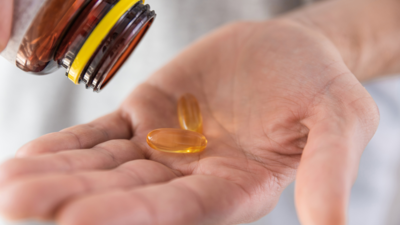Risk of taking Vitamin D in the wrong way and how to take it safely

Vitamin D is an essential ingredient in keeping us healthy. Vitamin D allows your body to absorb calcium, which is needed for healthy bones. Besides calcium, vitamin D prevents osteoporosis, a disease that weakens bones and makes them more prone to fractures. Beyond bone health, vitamin D helps with muscle function, nerve impulses, and the immune system, fighting infection in your body.
Side effects of consuming too much vitamin D
Vitamin D plays a critical role in maintaining bone health, supporting immune function, and regulating calcium levels. However, taking vitamin D incorrectly can lead to serious health risks, such as vitamin D toxicity. This condition, though rare, can cause elevated calcium levels (hypercalcemia), leading to symptoms like nausea, vomiting, weakness, increased urination, and even kidney or heart complications in severe cases. It’s crucial to avoid high doses of vitamin D unless prescribed by a doctor.
According to Dr. Rohit Jain, MBBS, MS, Orthopedics, Regency Health, Lucknow, “High levels of vitamin D in the blood, usually over 375 nmol/L or 150 ng/mL, can lead to nausea, vomiting, muscle weakness, confusion, loss of appetite, and even kidney stones. In severe cases, it will lead to kidney failure, abnormal heart rhythm, or death. These high levels are more likely to be due to excessive intake from supplements and not from the sun, as your skin guards you against excessive vitamin D production.”

Taking Vitamin D on empty stomach
Additionally, consuming it without food or on an empty stomach can cause digestive issues, such as nausea or constipation. To improve absorption, vitamin D should be taken with a meal that contains healthy fats. It’s also important to discuss any medications you are taking with your doctor, as certain medications—like corticosteroids or epilepsy treatments—can interact with vitamin D supplements.
How to consume vitamin D properly
- According to Dr. Srishti Goyal, Consultant Dietitian, Ujala Cygnus Group of Hospitals, “To avoid complications, it is crucial to stick to the daily recommended upper levels of vitamin D. Individuals aged 19 and above have a daily upper level of 100 mcg (4,000 IU), but your physician might give you higher doses if you are undergoing treatment for deficiency for a short period of time.”
- Another crucial aspect of taking vitamin D is the way you take it. Vitamin D is a fat-soluble vitamin, meaning it should be taken with fatty foods such as avocado, nuts like almonds and walnuts, and seeds like chia, flax, etc. to be absorbed more efficiently.
- Vitamin D helps regulate calcium levels, so it should be taken with calcium-rich foods like dairy products, leafy greens, and fortified plant-based milk. Taking it without fats and calcium will make it less effective.
- When you take vitamin D also matters. Taking it late at night will disrupt your sleep, as it might affect the production of melatonin, the sleep hormone.
- To take vitamin D more effectively, ensure you are consuming nutrients that work in synergy with it, such as calcium, magnesium, and vitamin K2, which promote bone health and better calcium metabolism.
- Regular blood monitoring is essential for anyone on high-dose vitamin D or with certain conditions, like obesity or kidney disease, to prevent imbalances or toxicity. Since vitamin D levels fluctuate based on sun exposure, seasonal adjustments—especially during winter—may be necessary.
- Incorporating natural sources such as sunlight, fatty fish, eggs, and fortified dairy can further support healthy vitamin D levels. Always consult your healthcare provider to determine the best approach for your individual needs.
By adhering to these rules—remaining within safe levels of intake, consuming vitamin D with fats, and paying attention to timing—you can experience most of the benefits with minimal risk. As with anything new, always check with your medical professional before incorporating any new supplement program into your life to make sure it’s appropriate for your condition.





